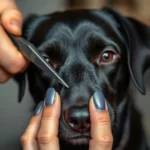
When it comes to dog breeding, responsible practices are crucial to ensure the health and well-being of the animals involved. One of the most debated topics in canine breeding is whether it is safe to breed brother and sister dogs. Understanding the genetic implications and health risks associated with this practice is vital for breeders and pet owners alike. This article will explore the intricacies of canine genetics, the potential health risks of inbreeding, ethical considerations, signs of inbreeding depression, alternatives to sibling breeding, and the legal aspects that govern dog breeding practices.
Understanding Canine Genetics
Basic Genetics in Dogs
To grasp the implications of breeding siblings, it’s essential to understand some basic principles of canine genetics. Dogs, like all living organisms, inherit genetic material from their parents. This material consists of genes, which are segments of DNA that determine various traits, from physical characteristics to behavior. Each gene can have different forms known as alleles, which can be dominant or recessive.
Genetic diversity is crucial in dog breeding. It helps prevent the expression of harmful recessive traits, which can lead to various health issues. A diverse gene pool ensures a more robust population capable of resisting diseases and adapting to different environments.
Inbreeding vs. Outbreeding
Inbreeding refers to mating closely related dogs, such as siblings or parent and offspring, while outbreeding involves mating dogs that are not closely related. Historically, inbreeding was common in dog breeding to maintain certain desirable traits within a breed. However, this practice can lead to a decrease in genetic diversity, heightening the risk of genetic disorders.
Outbreeding, on the other hand, promotes genetic health by introducing new alleles into the gene pool. This not only enhances the overall vigor of the offspring but also reduces the probability of inheriting genetic disorders.
Health Risks of Breeding Siblings
Genetic Disorders Common in Inbred Dogs
Breeding brother and sister dogs can significantly increase the risk of genetic disorders in the offspring. Inbreeding can lead to a higher likelihood of common hereditary diseases, which can include:
- Hip Dysplasia: A malformation of the hip joint that can cause pain and lameness.
- Heart Conditions: Various heart diseases can be more prevalent in inbred dogs, such as dilated cardiomyopathy.
- Eye Disorders: Conditions like cataracts and progressive retinal atrophy can arise more frequently in inbred populations.
The accumulation of harmful recessive traits can lead to serious health complications, affecting the quality of life for the dog and potentially leading to early death.
Impact on the Immune System
Inbreeding can also compromise a dog’s immune system. The lack of genetic diversity can lead to a weakened immune response, making inbred dogs more susceptible to infections and diseases. This heightened vulnerability can result in higher veterinary costs and a decreased quality of life for affected dogs.
Ethical Considerations in Breeding
Responsible Breeding Practices
Responsible breeding practices are essential for ensuring the health and welfare of dogs. Responsible breeders prioritize the genetic health of their animals, conducting thorough health screenings and genetic tests before breeding. These tests can identify potential hereditary issues, allowing breeders to make informed decisions that promote healthier offspring.
The Role of Breed Clubs and Organizations
Breed clubs and organizations play a crucial role in establishing ethical breeding standards. They provide guidelines for responsible breeding practices, promote health testing, and educate breeders about the importance of genetic diversity. Resources from these organizations can help breeders ensure they are making ethical decisions in their breeding programs.
Signs of Inbreeding Depression
Physical Manifestations
Inbreeding depression can lead to various physical issues in dogs. Common physical symptoms include:
- Shortened Lifespan: Inbred dogs may have shorter life expectancies due to hereditary health issues.
- Reduced Size and Stature: Inbreeding can lead to dogs that are smaller or less robust than their outbred counterparts.
- Congenital Defects: These may include cleft palates, skeletal malformations, and heart defects.
Behavioral Concerns
Inbreeding can also affect a dog’s temperament and behavior. Dogs bred from closely related parents may exhibit:
- Increased Aggression: Some studies suggest that inbred dogs may display more aggressive behaviors.
- Anxiety and Fearfulness: Inbreeding can lead to behavioral issues, including heightened anxiety and fear responses.
- Decreased Trainability: Behavioral problems can hinder a dog’s ability to learn and respond to training effectively.
These behavioral concerns can significantly impact the relationship between dogs and their owners, leading to challenges in training and socialization.
Alternatives to Breeding Brothers and Sisters
Choosing Healthy Mates
To promote the health and vitality of future litters, selecting healthy mates is crucial. Breeders should prioritize genetic diversity, seeking partners unrelated to each other. This approach increases the odds of producing healthy puppies with fewer genetic issues.
Potential breeding partners should undergo health screenings and genetic testing to ensure they do not carry harmful recessive traits. By choosing healthy mates, breeders can contribute to a stronger, more resilient breed.
Adoption and Rescue Options
Adopting mixed-breed dogs is another excellent alternative to breeding siblings. Mixed-breed dogs often benefit from greater genetic diversity, resulting in fewer inherited health problems. Many local shelters and rescue organizations promote the adoption of mixed-breed dogs, providing loving homes for animals in need.
Adopting from rescue organizations can also help reduce the number of homeless animals while supporting a more diverse gene pool. Many rescue groups focus on promoting the health and well-being of dogs, ensuring that their animals are placed in responsible and caring homes.
Legal and Regulatory Aspects
Breeding Regulations
In many regions, strict laws govern dog breeding to ensure the welfare of the animals involved. These regulations often require breeders to adhere to specific standards concerning health, living conditions, and breeding practices. Breeders must be aware of these laws to ensure they operate within legal boundaries and prioritize the health of their dogs.
Consequences of Irresponsible Breeding
Irresponsible breeding practices can lead to severe consequences, including legal repercussions. Breeders who engage in unethical practices, such as breeding sick or closely related animals, may face fines, loss of breeding licenses, or even criminal charges. Additionally, the long-term implications of irresponsible breeding can harm the breed’s reputation and contribute to the suffering of countless dogs.
Conclusion
Breeding brother and sister dogs poses significant risks to the health and well-being of the resulting puppies. The potential for inheriting genetic disorders, compromised immune systems, and behavioral issues raises ethical questions about such practices. Responsible breeding is essential to ensure the longevity and vitality of dog breeds, and breeders should prioritize genetic diversity and health screenings.
By making informed decisions, selecting healthy mates, and considering adoption options, we can promote a future of healthier, happier dogs. Understanding the implications of breeding siblings is crucial for anyone involved in canine breeding, ultimately leading to better health outcomes for our beloved pets.
FAQs
Is it ever safe to breed brother and sister dogs?
Breeding brother and sister dogs is generally not recommended due to the increased risk of genetic disorders and health issues. While some breeders may argue for controlled inbreeding in specific cases, the potential consequences often outweigh any perceived benefits.
What are the signs of genetic disorders in puppies?
Signs of genetic disorders in puppies can vary widely but may include physical abnormalities, developmental delays, and behavioral issues. Common indicators include limping, difficulty breathing, seizures, and unusual behaviors. Early detection and veterinary intervention are crucial for managing these conditions.
How can I find a responsible breeder?
To find a responsible breeder, research breed clubs and organizations that promote ethical breeding practices. Attend dog shows, ask for health clearances, and seek recommendations from veterinarians and pet owners. A responsible breeder will be transparent about their breeding practices and prioritize the health and well-being of their dogs.









